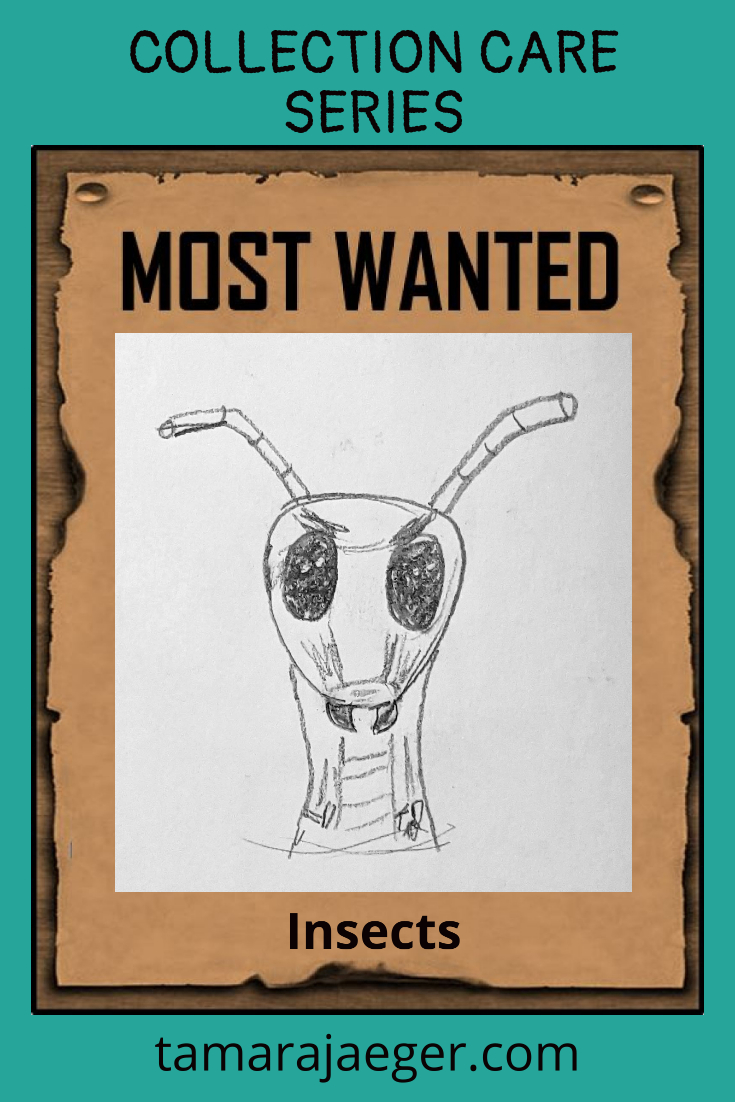

Collection Care Series: Enemy #4: Insects
This week, we’ll be talking about our next enemy: Insects.
Nobody wants a bug infestation. Those little buggers can be Such a pain and they can cause a Lot of damage. I’m not going to go in detail about the different types of insect pests that can attack your treasures (though if there’s enough interest, I can do a separate blog post on it later—let me know if that’s something you’d be interested in). Today we’re just going to cover some general information and storage recommendations.

Your organic materials are the ones that are at risk from insect damage. Namely paintings, paper, photos, wood, and wooden musical instruments. Materials like leather, textiles/fabrics, and horn are also prime insect buffets. You want to avoid insect problems if you can—treating infestations after they occur is a multi-faceted and potentially frustrating process.
There are two main things you want to keep in mind in preventing insect infestations. First is general housekeeping. Keeping your home and/storage areas clean helps avoid attracting insects in the first place. Vacuum, dust, don’t leave open food or crumbs lying around. If there’s nothing enticing, they’ll just keep going and settle somewhere else! Second is humidity levels—if you missed it, we talked about that here. In particular, you want to avoid areas of high humidity, which many bugs need in order to thrive. If your basement is damp, try a dehumidifier. You want to make your space as unappealing to bugs as possible.
For items you are storing, as opposed to having out on display, you’ll want to store them in something that isn’t seen as food by insects—avoid paper or cardboard boxes. You also want something that will help block the scent of your tasty treasures! Sealed plastic storage boxes are a great option. The high-quality food-grade ones like Tupperware and Rubbermaid are acid-free and frequently used by museums. As a side-benefit, they also provide more physical protection from crushing and other impact as well as protection from flooding and water damage.
If you do end up with an insect infestation, you’ll want to contact a professional conservator. There are several different treatments, and they’re not all suitable for every type of material. And while your treasures are getting treated, you’ll need to address the environmental conditions that allowed the bugs to take over in the first place. Again, a conservator can assist you with that.
How do you store your vulnerable treasures? Tell me in the comments.
Missed the previous posts? Start at the beginning of the collection care series here.
Want to stay up to date and see more of what I’m working on? Sign up for my mailing list here and get a FREE collection care resource guide. (I promise not to be spammy with my emails—I hate that too!)